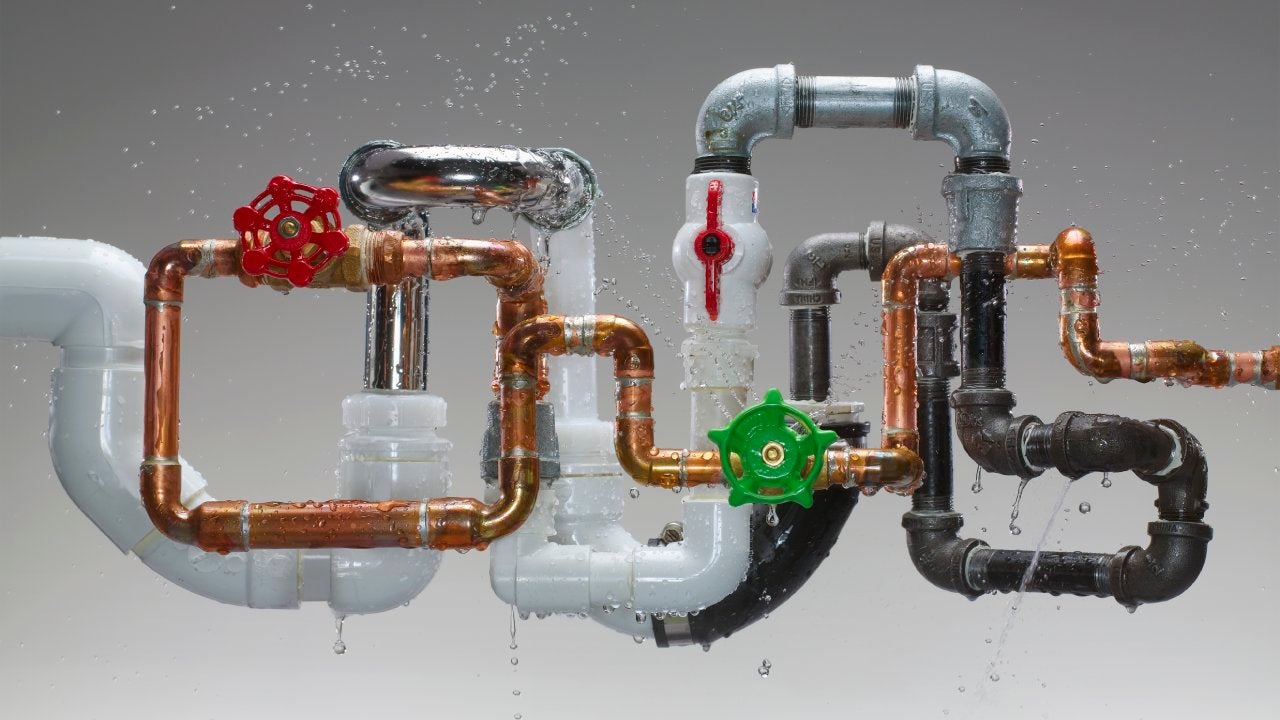How do smart faucets work? A guide to touchless and other trends

Remember the first time you encountered a touchless faucet in a public bathroom — the thrill of turning it on and off with a wave of your hand? Such smart sinks have existed in commercial restrooms and spaces for years, but they’re now becoming more widely available in home kitchens and bathrooms.
Should you go with the flow? Let’s discuss everything you can do with hands-free and other sorts of smart sink faucets, the benefits and some cons to consider.
What are the types of smart faucets?
The term smart faucet is actually a catchall term for a variety of devices that feature some sort of operational tech. Among the varieties:
- Touchless: Look, ma, no hands! These faucets use motion sensors to capture hand swipes that activate them.
- One-touch: The faucets activate with a single tap from your hand, elbow or in some cases your foot (often anywhere on the device).
- Voice-enabled: Vocal commands power on the water, adjust the temperature and power off.
- All-in-one: Some models feature voice commands and a one-touch water application.
In addition, many smart faucets offer digital displays to show you the exact temperature of the water, allowing you to adjust it — something akin to an aquatic thermostat.
However they work to turn water on or off — motion, one-touch or voice commands — the point is, smart faucets are powered, as opposed to regular faucets, which operate manually.
How do smart faucets work?
You might feel like an H20 genie is running your smart faucet. But it’s not quite magic, it’s actually something more mundane.
With motion-sensing devices, you’ll notice a box under the sink; it’s the mechanism that responds to your commands. It contains a magnetic valve that allows water to flow through your faucet. Once activated, the solenoid valve initiates the flow of water; and then, after a shutdown timer initiates, restricts water from going through your sink — not unlike a tiny dam.
Of course, your smart device needs a power source to fulfill your requests. Some draw power from a plugged-in source (the box under the sink). Others draw on batteries (AA and C being the most popular). These batteries last from two to five years.
The smartest of smart faucets operate with an app. Some manufacturers, such as Moen, make their smart sinks compatible with virtual assistants like Amazon’s Alexa; that’s often how the voice-activated ones work.
What else do smart faucets do?
Turning water on and off is just the beginning of what some smart faucets can do, especially app-enabled ones.
Once you download the faucet’s app, you can check the water usage from the sink, control temperatures and keep the water flowing enough to ensure the pipe doesn’t freeze when Mother Nature brings an icy chill. You can even set the device to discharge a certain amount of water. So, if you need to fill a pitcher or add a cup of water to a pot, your faucet can automatically do it. How cool is that?
Many smart faucets feature a timed shut-off, reducing the water wasted during use. Others have an LED display with colors corresponding to temperature. Blue indicates cool, myriad colors denote lukewarm to warm, while red is hot to near-scalding.
Some, such as the American Standard Saybrook filtered kitchen faucet, have filters that eliminate lead, chlorine and other impurities from your aqua. Or also allow you to toggle between fresh, clean water for drinking and tap water for cleaning. And some faucets have LED monitors, notifying you when it’s time to freshen your filter.
Pros of smart faucets
Smart faucets have several benefits.
- Increased water conservation: “You can save up to 700 gallons of water per year or even more with smart faucets,” says Gunner Thompson, a realtor with Coldwell Banker Realty in Tampa, Florida. “Other faucets have problems regarding leakage. But smart faucets are made of materials that are able to prevent any potential leakage of water.” Plus, their auto shut-offs prevent wasteful drips.
- Greater convenience: Having smart sinks can save you time if your hands are full or dirty for cleaning. They can also be a boon for the disabled, the elderly or any one who struggles with gripping items or has trouble seeing.
- Improved hygiene: “The reduction of splashes and controlled water flow keeps the faucet area clean. Your hand doesn’t need to touch the faucet to be activated, so dirt or residue of food doesn’t touch the faucet,” says Donald Shurts, a realtor with Keller Williams Advisory Realty in Beavercreek, Ohio. No contact reduces the spread of germs and cross contamination.
Cons of smart faucets
Alternatively, here are caveats to consider before buying a smart kitchen faucet:
- They’re expensive: “The average price of touchless faucets is around $300 to $400 while the smart faucets price is around $450 to $700 in any local store both online and offline,” Davis says. Plus, you probably will need a pro to put it in, and, “the installation cost is around $250 or even more,” depending on local labor costs.
- They’re prone to outages: If you have a model connected to your power supply, a blackout or Wi-Fi blip will disable the smart features and settings. If it’s battery-powered, the batteries will have to be replaced. Most faucets do have manual levers, so you can still get water when the power fails.
- They can be complicated: As with any gadget, the more features it has, the more that can go wrong. The sensors or solenoid valve can malfunction, preventing water from flowing — and so you’ll have one less sink to use until a specialist can address the issue. And there might be a learning curve in manipulating the faucet; until you master it, you could be stuck with too short a shutoff time or other things not to your liking.
You may also like


Which plumbing pipes cost the most money?




